#but given that I finally downloaded this on my actual phone instead of my tablet for the first time in years
Text

So basically, in a case about him shoving money at someone so they shut up about him. . .he can’t shut the fuck up himself. I would say something clever and funny here, except the sad part is that this is just so normal in current politics that it’s just. . .not hilariously absurd behavior anymore? Not to say that it’s not absurd - it is beyond such, but it is just. . . predictable, I suppose.
I guess this is how I feel about politics lately? Either I get mad at everything or I try to laugh at everything and normally that works because politicians usually aren’t so tragically stupid so very often, but now I just kinda have to chuckle at the particularly eyeroll worthy things like this, and try to ignore everything else or my brain will explode.
#maybe that’s my biggest pet peeve about the current state of politics#Normally I like having discussions with people#of various mindsets and lifestyles and backgrounds#while my personal standpoint about many if not most political things is pretty solid. I also enjoy finding out more about things.#It’s always nice to learn more about things.#when it gets to a point like this or let’s be real-a point like where it got a few months ago when. More like a couple years ago honestly#There’s just so much. Too much. And two try to process all of it especially in a way such that one keeps up with useful discussion? oof.#I know I meant to do something else in these tags – something more specific – but at least on mobile#I just lost like three tags because the one I was working on hit 140 but when I was warned#I didn’t get to backspace or anything. I just kind of deleted the whole thing.#And in my confusion and attempt to undo what I had done#I managed to backspace a couple times and lose the finish tag above that one#and of course my first attempt at explaining that I had lost two tags turned into three tags because#I lost the first attempts that said two tags because it went over and yet again my attempt of not backspace this time#I just lost another two tags and then at this point I don’t even remember where I was going with this train of thought either#tl;dr: I wish I could take as much amusement from this as I want to but I can’t because shit like this is just so fucking normal#but hey it’s better than January 6 or trying to nuke a hurricane so I suppose I can live with it#right so I realize that I got to read all of the things I just typed in the page before this#so I did and while I have a laughable amount of nowhere near the fuck enough spoons#there’s a very good chance I am going to come back to this when I get on my iPad or PC#There’s also a very good chance I’m going to completely forget this post exists if not the app entirely#but given that I finally downloaded this on my actual phone instead of my tablet for the first time in years#And I just lost another fucking tag#this time naturally it had to be one with Contant that I remember as semantically important#but similarly naturally of course I don’t bloody well remember#right so I am going to go back to the stuff I was doing now cause I was doing stuff before I saw a Tumblr notification#which I didn’t actually look at at the time but but I can absolutely be sure that it was a hefty part of the reason why#when I found something that I wanted to post about and a context that had a larger audience and not just individuals#didn’t have FB/Reddit (tho lbr I would probably have a 6 foot nose if I tried to imply they were great social networks)#which goes back to seeing the tumblr notif & still having a big Nostalgia so. hi here i am
0 notes
Text
Making a Home Ch. 10
Kita Shinsuke had experienced a lot in life. He had been raised with his grandmother, a loving foster parent and for some time he followed in her foot steps before finding his own path. He thought his foster care license had expired before getting a call at three am with two small boys thrust into his arms. Miya Osamu and Atsumu, from broken homes but still fighting. Thirty days before his license expires. Thirty days to make a choice, keep the boys or let them be separated into different homes. Thirty days to fall in love with them.
Words: 3k
Relationships: Gen
Warnings: Mention of past child abuse, non-graphic abuse
Not from Kita, but it is mentioned. I will post any warnings before any panic attacks or vague descriptions of abuse.
Read below or on AO3
Shinsuke didn’t look up as the doorbell rang again, letting Oikawa move past him to greet whoever had come in. Instead he and Osamu had Azumane on his knees in the back corner office while Osamu did his best to braid a ribbon into the long stips. Azumane still looked a little traumatized from having a four foot tall child run up to him and yell the question at him to braid his hair.
“Are you sure… This is highly unprofessional.” Azumane said, glancing up at his boss.
Shinsuke was moving the drawings on the back wall to clear up more space and barely gave Azumane a quick flick of his eyes before he was shrugging. He didn’t say that as long as Osamu was smiling he would let him do anything, he didn’t think it needed saying aloud.
“My store, my rules. And I think you’re meeting the dress code just fine.” Shinsuke hummed, trying not to laugh at Azumane’s defeated sigh.
“We have a dress code?” Sugawara’s voice made Azumane whine a little louder as the silver haired man crouched down to offer Osamu a new clip to slide into the braided ribbons before moving to the thread wall. Azumane gave him a look of despair as the butterfly was quickly added to his hair, Shinsuke only felt a little guilty that it was probably starting to get unnaturally heavy. Not nearly enough to stop Osamu though
“Yes, it specifically states not to wear anything Oikawa considers to be good.” Shinsuke turned, ignoring the laughter that broke from Sugawara as the pounding of feet reached him. Seconds later Atsumu burst through the gateway.
“ ‘Samu! I’m getting married.” The words made Shinsuke drop the drawings immediately as he scrambled to understand what was going on. He twisted to stare open mouthed at Atsumu, completely speechless as the child rushed at his brother and skittered to a stop in front of him.
“Why?” Osamu looked as confused and terrified as Shinsuke himself felt. Atsumu either didn’t notice or didn’t care because he just held up a box with a bright oversized grin.
“ ‘Cuz if I marry him then I get all the cookies always!” Atsumu chirped, eyes wide with wonder and delight. Shinsuke slowly turned his head to blink at Azumane and Sugawara, both of them were already looking to him for answers.
“Akagi…” Shinsuke called, letting his eyes fall shut as he heard Akagi’s squeaky answer from outside of the back office. He moved around the boys, pausing only enough to brush Atsumu’s hair down from the wind, and looked to find Akagi attempting to hide behind a rack.
“I left you alone with him for…” He glanced at the clock and then back over. “An hour and a half. And now he’s getting married?”
Akagi looked momentarily ashamed before shrugging and holding up a box of baked goods. He smiled pleasantly over the box, attempting to flutter his lashes sweetly but it did nothing against Shinsuke’s annoyed glare.
“It’s not my fault.” Akagi whined, pitching his voice up and making a few customers glance over. He quieted when Shinsuke’s eyes narrowed but his pout only grew stronger as he huffed.
“I didn’t tell Shinji-kun to give him an extra muffin. He just did it and said he liked Atsumu’s shirt, then Atsumu was declaring their engagement to everyone. I thought I was going to have to fight Takahiro-kun for his son’s honor.”
Shinsuke watched him before sighing and glancing back at the twins. They had joined Azumane on the ground and were currently sharing pieces of muffin with him while Sugawara finished grabbing the fabric he’d actually come in for.
“I think Asahi’s already planning the wedding outfits,” Sugawara said breezily as he moved past and back to his customer.
“I’m not making enough money to deal with all of you at the same time.” Shinsuke said softly, wondering if this was going to be his life.
Running after Akagi to keep him from accidentally traumatizing Shinsuke’s kids, or worse teaching them things to traumatize all of the adults in their life. Meanwhile, Sugawara had found Oikawa and was currently harassing him with a perfectly innocent smile while he tailored a customer’s pant leg. Azumane had grabbed his tablet and was sketching something out while Atsumu was being taught by his brother how to continue the endless braids on Azumane’s head.
In all honesty, a life like this… was a good one. The feeling was sweet, winding in Shinsuke’s stomach as he watched the scene and he wondered if that was why his grandmother had never given up on foster care. Children weren’t necessary for his life to be happy, he was happy before they had arrived and if they left he would still find his life fulfilling and what he wanted. Yet, they brought something new, something light that Shinsuke was hesitant to give up. He could nurture them, protect them, help them grow and the option was more enticing by the minute.
“Oh shit you’re smiling… I’m going to die… Goodbye my sweet ‘Mimi, goodbye my muscular boo Aran, farewell my darling nephews- Shinsuke where are you going? You know my dramatic monologue needs an audience. Don’t make me download TikTok to get attention, you know I’ll do it.” Akagi called softly as Shinsuke took the box of treats before turning and walking away, a fondly exasperated smile playing on his lips. Shinsuke raised a hand to dismiss his remarks, ignoring the whine that rose up.
“Go help one of the customers, I have kids to watch.” Shinsuke said, slipping into the office to watch Atsumu finish his first braid. It was terrible and unbalanced and Shinsuke was proud of him.
“Hey, did you want to meet the others and bring them their muffins?” Shinsuke asked the two of them, holding up Akagi’s box in explanation. Both of them lit up, smiling brightly as they nodded and reached their hands up eagerly for Shinsuke to take them.
The day passed rather quickly, especially after the length of the day before, and as seven o’clock hit Shinsuke was flipping off the last light in the shop. Azumane and Sugawara had left only a few minutes before and Akaashi had escaped a few hours ago. Oikawa was still on the phone with someone but he gave Shinsuke a thumbs up and mimed locking the door as he passed.
Atsumu had already snuck back into the house and was curled up on the couch with Kitty as he played through ‘Spyro’. Osamu on the other hand, had decided he was in charge of Akagi for the day and was enjoying bossing him around.
Still, Shinsuke hadn’t expected to walk into the office between the two buildings to see Akagi on the floor and Osamu in front of him. Osamu was doing his absolute best to explain how to draw a flower for a card and Akagi was either intentionally harassing him or genuinely had no idea what he was doing. Shinsuke watched from the doorway for a moment before deciding it was a little bit of both.
More than a few doodles decorated the floor, markers and crayons laying beside both of their knees while they leaned over Akagi’s current project. Each one was decorated with rather… adorable characters for ‘cheer up’ and ‘you’re doing great’. Shinsuke honestly had no idea what it was for or why Osamu was making Akagi make them but as long as they were having fun he wasn’t going to say anything.
“No, no, you have to make petals- Shinsuke-san!” Osamu chirped as he felt eyes on his back and turned to see him. He grinned, a bright and free smile, and pointed at Akagi who was still just drawing lines on his paper.
“We’re making cards for Azumane! So when he gets scared he can look at these and know it’s okay!” Osamu explained and Shinsuke’s heart melted. He moved over, gently mussing the hair and trying not to give in to the urge to kiss his head.
“That’s great, Osamu. Will you be helping me with dinner tonight as well?” He asked, heart swelling at the way Osamu’s eyes lit up and the child twisted to grab ahold of his hand.
“Can I?”
“Of course. But you need to clean up all of this before we can. So why don’t you help Akagi clean up and then we can get started?” Shinsuke offered and Osamu nodded. He turned to Akagi, hands on his hips.
“C’mon Oji-san! Let’s get this taken care of! Then I can show you how to cook so you’re not hungry anymore.”
Shinsuke laughed softly, making his way inside as Akagi insisted he knew how to cook. Between himself and Osamu, Akagi might actually leave the country with basic knowledge to feed himself instead of eating out constantly.
Shinsuke glanced over at the couch as he walked in, noting Atsumu’s curled-up position. As attached to his brother as he was, Atsumu hadn’t really branched out much and didn’t seem to connect with people as well as his brother. Even with his comment about marriage (though Shinsuke still thought it was rather cute he had forgotten that money was a thing that he could use to buy pastries and instead skipped straight to marriage) he hadn’t brought up Shinji-kun or the bakery again all day.
“Do you mind if I sit with you?” Shinsuke asked softly, waiting for Atsumu’s nervous glance and jerky head nod. “Thank you, Atsumu… Can I check on your cheek?”
This time Atsumu fully froze, pressing the pause button on the game. His eyes darted to Shinsuke before he slowly nodded his head, anxiety clear in his gaze. Despite seeming to finally relax and branch out, Atsumu wasn’t actually asking for what he wanted. Instead he was letting his brother lead them around and following along happily with whatever adult offered him something.
Shinsuke moved closer until he could gently tilt up the child’s head, looking over the dark purple skin carefully. Atsumu’s eye didn’t seem affected by it and it was healing well for only being the second day. Though Shinsuke could see that it was slightly swollen, the skin around it pink and irritated like someone had been prodding it.
“Does it hurt much?” Shinsuke asked as he pulled his hand back with a quiet thank you.
“I’ve had worse.” Atsumu said and Shinsuke noticed he didn’t answer the question. Atsumu turned his head away as Shinsuke tried to look closer, a frown on his own lips.
“Atsumu, were you touching it?” He kept his voice light and gentle so Atsumu wouldn’t think he was in trouble. Regardless the child flinched subtly, fingers grasping the controller tighter.
“The… the people in the shop… kept staring…” Atsumu confessed after a few heartbeats, shaking slightly. “I wanted to make them go away but… It just… made it worse…”
Shinsuke stared at him for a moment, feeling guilty for not noticing at all. Of course Atsumu would have been self conscious about his face especially with the memory of how it happened so fresh in his memory.
“Why didn't you say anything?” Shinsuke regretted the words as soon as they left his mouth. Of course Atsumu hadn’t said anything. He didn’t know he could trust anyone yet, it was only the second day there was no way he would have warmed up so quickly with his past.
Atsumu froze, shaking slightly and Shinsuke realized he was trying to hold his breath before he started crying. His mind blanked for a second before he rapidly told himself to calm down and instead focused on Atsumu.
“I’m sorry Atsumu. It’s alright if you don’t want to tell me things, I didn’t mean to imply otherwise…” Shinsuke started but it was clear that it wasn’t helping when Atsumu shook again with a ragged breath. “Atsumu…”
Shinsuke licked his lips, trying to think of how to calm him down before Osamu and Akagi finished. He didn’t want Atsumu shutting himself off to everyone to keep his brother happy and he definitely didn’t want Osamu to pick up on his brother’s panic and leave him with two anxious kids to calm down.
“Atsumu,” he started again letting his voice soften until it was near a whisper, “it’s alright. I’m sorry they were staring at you, next time you can come back inside if you want. I’m sorry I didn’t notice, I should have been there to help you. I’m very sorry I didn’t protect you.”
Atsumu’s gaze shot to him, once, twice, three times. The tiniest tears were forming at the edge of his eyes at his panic before confusion started to build instead. His mouth moved without words, and his eyes danced around the room. His fingers tapped at the controller for a moment before he finally seemed to be able to come back to himself.
“What…” His voice was a whisper and Shinsuke regretted not watching his words better. “Why… Why are you sorry?”
“Atsumu, it scared you right? Made you upset that they stared?” Shinsuke waited for the inevitable nod before continuing. “I should have stopped that but I didn’t realize it was happening. It’s my fault for not protecting you… Atsumu… A parent is supposed to protect you, I should have let you know you were allowed to leave earlier or let you know you could have stayed right next to me. And for that I’m sorry. The bruises on your face won’t go away by poking at them, they’ll just hurt worse and now it’s because I failed you. I’m sorry, Atsumu. I hope you can forgive me.”
Atsumu wasn’t able to speak, he just stared at Shinsuke. Choked noises came from his throat but no words escaped as he looked on with confusion and anxiety. The child swallowed, looking away a second later before rapidly nodding his head.
The only other time any adult had ever apologized had been when Kenma-kun said sorry for his game music being loud back at the police station. No adult had ever apologized to Atsumu for messing up and certainly none of his foster parents had ever bothered to ask him to forgive them.
Atsumu had no idea what to do with the knowledge or how to act. Did he say yes? Did he hug Shinsuke? Did he say sorry back? Cry? Smile?
He put the controller down slowly beside him, biting his lip as he turned to look more fully at Shinsuke. His foster parent actually looked remorseful, like he did really feel bad for not noticing Atsumu’s problem. Atsumu wasn’t really sure how to tell him that he was good at hiding it, and he had a feeling that would just make Shinsuke sad again. After all… Parents were supposed to love their kids right? Being hurt would make a parent sad and Shinsuke had said...
“You… Said...parent…” Atsumu said softly, flinching internally as Shinsuke blinked at him. He meant foster parent, of course he did. Atsumu shook his head, shoving away the hope and the heartache that was taking its place.
“It’s okay…” Atsumu said quickly as Shinsuke opened his mouth to say something. “Really… it’s okay. I… I… I’ll leave, next time.”
Shinsuke hesitated, wanting to push further but this wasn’t a teenager. This was a scared six year old who didn’t have the tools or the emotional maturity to talk through all of this in one sitting. They’d have to work at it. Together.
“Only if you want to.” Shinsuke murmured, tilting his head to look at the bruises again. “I’ll go get an ice pack for the swelling alright?”
Atsumu nodded, letting his gaze fall to the couch when Shinsuke left. He should have known better than to think Shinsuke actually thought of himself as their parent. He must have meant whichever parents decided to adopt them, if any did.
Yet….
Shinsuke-san was kind, was it bad of Atsumu to wish Shinsuke was his parent? That Shinsuke would decide to keep them after all instead of passing them off like a baton? Was Atsumu a bad person for not wanting Shinsuke to be disappointed in him for being weak? Was he betraying his future parents by wanting Shinsuke to stay with him and Osamu?
He jumped as he felt Shinsuke sitting down again, looking up to see him offering an ice pack in one hand and… The fish crackers that Atsumu had asked for at the store.
Shinsuke’s blank face softened and Atsumu was starting to realize that Shinsuke wasn’t blank so much as… quiet. You had to look further than just his frown to know what he was thinking.
“You didn’t eat much at lunch since you ate so many muffins, so I thought you might like them.” Shinsuke explained as he reached forward and placed the ice pack gently over Atsumu’s bruise. Atsumu shook slightly, the words escaping him again but Shinsuke didn’t seem to mind as he ruffled his hair.
“Are you okay? You just have to nod or shake your head, okay?” Shinsuke said, the corners of his lips lifting as Atsumu nodded his head and moved to hold the pack on his face. Shinsuke pushed off the couch after opening the box, turning back towards the shop.
“I’m going to go see what’s taking Osamu and Akagi so long okay?” He explained, moving a few steps towards the door. He glanced back when a soft noise came from Atsumu, taking in the blinking eyes that lingered on the spot beside him.
Atsumu didn’t want to be alone again. Part of him hated it, he’d only had Osamu for years. Why was it different now? Part of him wanted to call Shinsuke back, ask if he was allowed a hug… Ask if he could stay a little while longer so Atsumu could pretend Shinsuke cared about him more than the money, more than because a friend asked. So Atsumu could pretend a little longer he was wanted.
“Hey Atsumu?” Shinsuke called, waiting until he glanced up to make sure he heard. “After dinner, would you be okay with showing me how to play that minecraft game?”
Atsumu’s eyes lit up immediately and he nodded, the barest hint of a grin growing on his face. Shinsuke couldn’t help but smile back, finally turning to look for his wayward sons that probably were covering his walls in paint.
They had some more work to do. A lot more work really, but Atsumu was smiling and Osamu’s laughter was echoing from the office. Shinsuke couldn’t help but think that this was a very good life.
#haikyuu!!#HQ#Miya Atsumu#Miya Osamu#Kita Shinsuke#Arankita#Inarizaki#fanfiction#Fluff#Making a home AU
16 notes
·
View notes
Text
Sailfish OS: One Day
Today’s gonna be a weird and long post, so let’s start slow and give you the choice.
We’ve had, for years, seen the constant back and forth between Google and Apple on their respective phone operating systems. Android, which has dominated the market on basically any device you can pick up here in the states, and iOS, which exclusively powers iPhones, iPods and iPads. Despite the two duking it out, Android does hold the highest market share. As of Q2 2018, Statista claims a whopping 82% market share for Android, and no other competitors really exist.
But, for years, I’ve been enamored by an OS that has been seemingly out of my reach, and has had a lot of drawbacks that prevented me from ever considering using it for more than an hour. An OS that’s been going strong for over 5 years, and might soon see a new breath of fresh air due to recent allegations to Huawei. So, after the break, let me tell you my tale of Sailfish OS.
Now one thing I want to briefly mention is the history of this, but don’t take it as gospel. I’m not an expert on this stuff, but what I’ve gathered is Sailfish OS is built on a foundation of MeeGo and Mer. MeeGo has prospered on its own to Tizen, an alternative OS used widely by Samsung on their watches and fridges (for some reason), while Mer was a fork of MeeGo driven by the community, and became the framework for ex-Nokia employees to start a new project, with the funding of Nokia through their Bridge program. Those ex-Nokia employees would found Jolla, and Sailfish OS would be their creation.
I first heard of Sailfish in 2013, as I was dipping my toes into the world of smartphones at that point. It looked incredible, with vivid, vibrant colors, a gesture-driven UI, a uniform design language, and a promise of privacy and openness that we definitely don’t see from companies today. And at the time, I was especially curious of their hardware.

Credit By Michael Coté - Flickr: Charles' Jolla phone, CC BY 2.0, https://commons.wikimedia.org/w/index.php?curid=31979039
The Jolla phone saw its first pre-orders in April of 2013, and was officially available for purchase by November. It had decent specs for the time. Snapdragon 400, a modest 540x960 resolution (keep in mind, the flagship Samsung Galaxy SIII had a mere 720p resolution), 1GB of RAM, a 2100mAh battery, and most interesting to me, the “Other Half” which powered the system’s Ambiences. You slap a new Other Half on it, and the color changed to match in the OS. Cool in concept.
The later Jolla tablet would be promoted with an Indiegogo campaign, but unfortunately, costs and availability of materials, and the development of Sailfish OS 2.0 led to the tablet ultimately being cancelled, with a handful of units out in the wild.
Since then, Jolla’s gotten back on stable footing. The OS is open for licensing with OEMs, and Jolla’s been able to get official support from places like Russia, and companies like... Sony.
I have the Xperia XA2, released in March 2018 for $300 in the US. I snatched it up on eBay for a mere $170, and I’ve enjoyed its clean design, near-stock OS, and the solid in-house Sony apps like the Gallery and Music apps worked wonders. But then I discovered Jolla was working on Sailfish X for the XA2.
As a way to support the OS, and a way to fund the continued development of an Android compatibility layer for those who need Android apps, Jolla has Sailfish X, a version of their OS that features predictive text input with the keyboard, software updates and customer support, and of course, the Alien Dalvik, which lets you run Android apps on the OS natively. This was important, since I knew I needed apps like Discord, Twitter, Google Maps, and I could see the available open-sourced apps of things like Keepass weren’t gonna cut it.
The process was a bit difficult, and I stayed up until 4am on Saturday, trying to get the phone backed up, flashed, and ready to go with what I needed. First, I had to unlock the bootloader, which Sony and Jolla made it pretty easy. Then I had to buy the OS for the meager $35 USD (which I had done before even being certain my phone would do it, don’t make my mistake), download their software package and just... do it. After an hour, I had the phone running Sailfish, and man, it was a delight from the beginning. Swiping, tapping, sliding, the OS felt smooth, it had this flow about it.
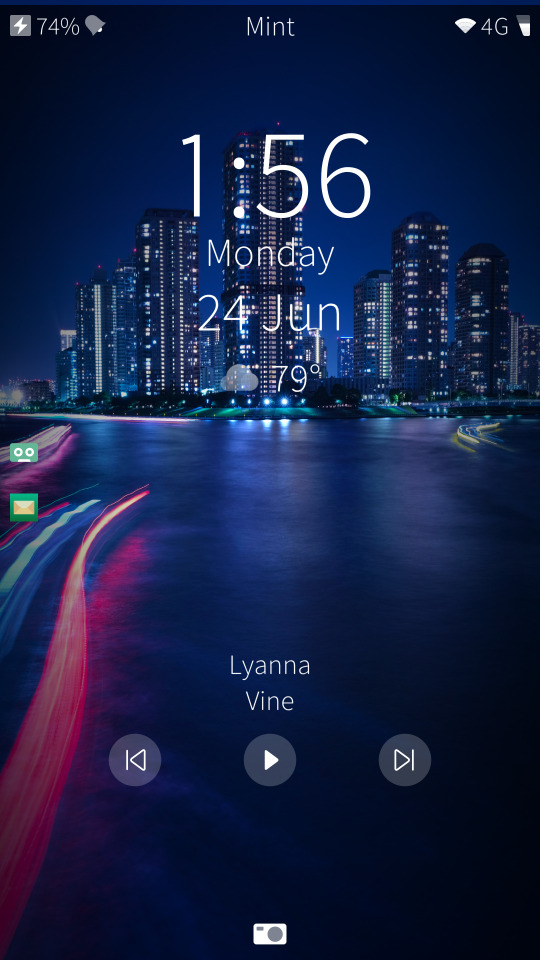
After I got the accounts logged in, I proceeded to grab a few apps... before realizing all too soon that I’d need Google Play services. This is where I’m probably gonna get a lot of flack. For all the effort I put in, I was about to install apps that were at least partially at fault for the slowness of my XA2 on Android, and defeating the point of installing Sailfish.
Let me be forward in saying I don’t care that much about privacy. Do I like Google being involved in every facet of my life? Absolutely not, but they are sadly a necessary evil. And it’s not like you, the reader, would be any different. Tumblr, after all, is owned by Verizon, who has a history of screwing customers in plenty of situations, including firefighters who need constant access to emergency services for contact. And too many things want or need Google Play for me to avoid it. Discord, Telegram, Authy, Youtube, I use all this stuff, and without GP, it gets unhappy. I could remedy some of those by using Amazon or just going open-source with F-Droid, but it won’t fix the issue. And even now, microG, an open-source implementation of Google Play services, isn’t perfect, and would likely cause more headaches than I could handle at 4am on a Saturday.
Fortunately, some good Samaritans on Jolla’s Together forums created a simple Bash script I could run by just SSHing into my phone... Wow, that was a sentence. A fitting one though. After that, and after some headaches with the Google Setup wizard (here’s a tip: use Vision settings to get to your Android settings, and disable permissions on “Android Setup” when you’ve gotten your account logged in), I was finally using my phone, and it runs quite well. Android apps don’t consistently work correctly. Often, I have to close apps like the settings or Keepass because the framework stops updating the frontend, or even fully stop and start Android support, but it works well for just about everything I’m using on it now!

I really like the UI and design, and since the Other Half concept isn’t there for the XA2, ambiences are just a menu away from changing the look and feel of the OS in this pleasing way.
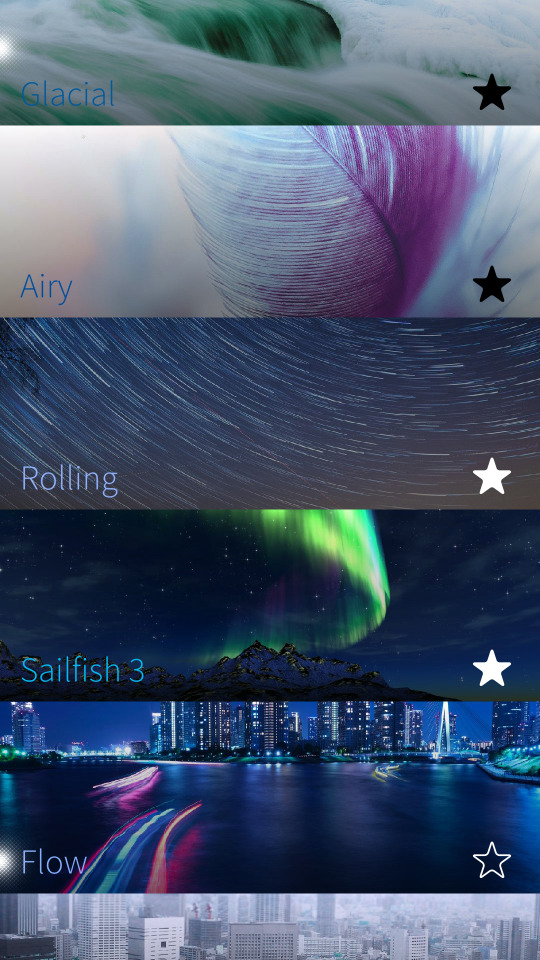
The system flows thanks to its gesture-driven controls. Swiping up from the bezel will bring you your app tray, swiping from the top bezel gives you quick settings. When you’re on the home screen, swiping left or right gives you a sort of agenda view where notifications, weather, and updates from your Twitter, Facebook, XMPP, VK and other accounts stack up. When you’re inside an app, swiping from the left or right bezel should bring you back home. Of all the interface controls on this device, that one is the most inconsistent one, a pain point given the nature of Android’s design language encourages these slide-out menus that you can’t consistently swipe open due to that gesture. The only setting I’ve found on that is to change the left-side bezel swipe to open the agenda instead of going home. I’d personally prefer hot zones on the bezels, so if I wanted to go home, swipe in from the lower half of the screen, but if I want the Android menus, slide from the top half.
Other interesting design cues come from the glowing parts of the UI, where extended menu options usually hide, or places you can slide out to are available.

Sliding down if the top is glowing usually opens this pulley menu, where each option can be selected by just pulling a bit and letting go. It’s an odd one, and due to the inconsistencies of apps and options, the pulley menu isn’t as instantly intuitive as I would hope. If there’s a glowing dot on a page though, you can simply slide to return to a menu from previously, or access another menu if the dot’s on the right side. Again, this is a bit inconsistent, as the unofficial Twitter app, Pingviini, showcases. You can actually just swipe left and right at will to access your notifications, conversations, search and trendings, and timeline. That bottom menu you’re seeing there is hidden so often, it’s basically pointless to have it there. This does make the whole system feel more cohesive, Pingviini looks like it belongs on this phone, but it does hurt usability.
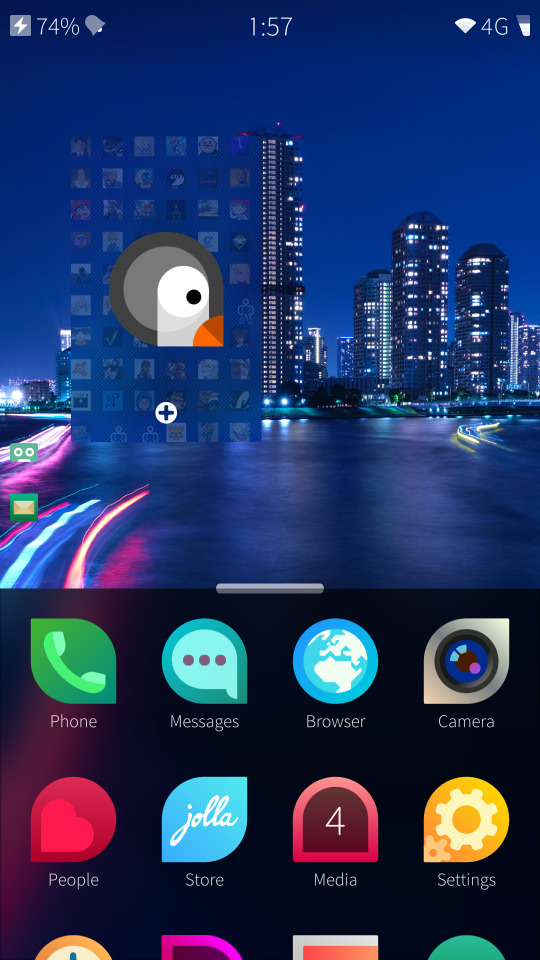
Thus far, I’m still testing and learning about this OS. I had to google screenshotting, which is simply holding the volume rocker together. Doesn’t feel as reliable as the Android alternative of Volume Down and Power / Home, but I’ll take it. I don’t plan on gaming with this. Games are just not what I buy a phone for. It’s nice to have it there, but I’d prefer to just play my 3DS if I’m out and about.
I can’t wait to do more with Sailfish. It feels really nice to use, and I’m honestly draining my phone’s battery just from the amusement of swiping and sliding menus around and admiring the design of this. The last OS I really enjoyed using was Blackberry 10, and this feels like a sort of spiritual successor, with the included agenda feed and the persistent cards for apps you’re using.
40 notes
·
View notes
Text
SO IT BEGINS (or, day one in earnest)
6AM: Up surprisingly quickly. Jetlag isn’t really hitting me and the lack of sleep on the flight is actually paying off. I’ve heard horror stories of the lines at this place:

and I was keen to avoid them.
In readiness for this (brief) journey I had downloaded the local public transport (TriMet) app (HopCard). Given this is new tech, in a new city, to be used in a time-critical task, one might think I would have tested this before sunrise. Indeed. Instead (likely because the NFC on my stone tablet of a phone wasn’t compatible) I had the pleasant experience of banging my phone against the reader like an idiot, holding up a line of people and an already late bus. From this we get the first lesson in social engineering of the day; if you make someone’s life difficult they give you free stuff, in this case a 2.5 hour pass just so I’d get on the bus. Yay me.
I arrived at the DMV just after 7, and with an empty belly and an hour to kill I turned 180 degrees and selected:

as my restaurant of choice.
Breakfast:

Question for anyone who knows: what do you call the thing on the left? Its not a pinwheel, or a scroll in Portland. Eventually I just pointed at it and nodded. Spinach and pine nut, because it made me think of Cat.
20 minutes go by (so, 7:20) and there’s 5 people in line.

Did I mention the DMV opens at 8? Its also mid-40s outside... oh well, this is what we’re here for. I slot in at #5. By the time the doors open, there’s 30 people in line.
I won’t regale you with tales of the DMV, but 1,2, skip a few and we end up here:

yay me. Its worth acknowledging the staff at this DMV; they were all incredibly friendly and helpful, to the point of refunding me when they realised I’d originally taken the more expensive and less optimal approach of applying for an ID Card instead of just taking the permit. I don’t know if they do Yelp reviews of public services, but “would recommend to a friend”.
Now that we can drive, lets not!
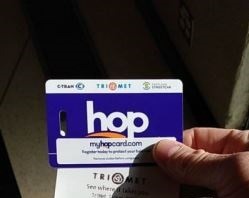
Back to the apartment for a wardrobe change, a full intro of the facilities at Yard (my first night in was a few minutes before offices closed, more of a handshakes and keys (and a lot of forms) sort of affair). A quick bit of due diligence:
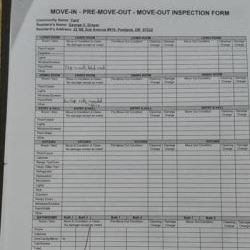
and we’re off to become a proper voter. I picked up my skateboard at this point, which was definitely the right decision. Like most cities Portland shrinks when you have wheels, and the sidewalks are in the majority unbroken enough to make travel pretty efficient.
Time for more forms!
(not pictured, actual voter registration)

It is at this point that I question the arrangement of the days tasks, having somehow planned them to incorporate the maximum number of river crossings possible. Oh well, since we have to do it, why not skate it!

Its a lovely view, but what isn’t obvious is the FOUR times I have to take sets of concrete stairs, under the highway, out of view of anyone save the homeless and some people clearly not in full control of their faculties. It was all fine, but I’d question whether its wise to do it after dark.
Here we learn another fun fact:if a city is built on a river, then everywhere in that city is UPHILL from the river... lesson learnt. Bus away from the river, skate back to the river.
Destination!

Acquisition!

Food!

Honestly I chose this place because it was mostly empty and the music was quiet, and I had to make some calls to book my driving test (which I did). It turned out quite refreshing and not too heavy, I could see it becoming a regular lunch destination if I work in the CBD.
Menu (one side at least. I had the Smoky bowl):

One last big task for the day; herd immunity (for me). February is late in the flu season and as such it was quite a task to find somewhere that had stocks remaining. Time to make some calls. Time for MASSAGE CHAIRS at the Lloyd Center. Sadly no actual mall time, but rewards are earnt. Half a dozen calls later and I discover a Rite-Aid out towards Milwaukie with a few needles left for the under 65 set. The route takes me on my first proper light rail trip in Portland to what I think is Gresham?

short visit because we’re back on an extremely packed bus (4pm will do that) for a fairly long (20min isn’t long but its ages compared to the morning links) trip south.
SUCCESS! STABBED!

On the way home I skipped the final link in the public transport chain and did a bit more skating. Nothing of note aside from the discovery of a savoury pie shop in Portland.
Challenge. Accepted.
Home, another wardrobe change (the rain started to fall post flu shot so I bundled up) and off for some local Japanese fare at Marukin Ramen.

SO GOOD. Will try to make it back to have a go at the sushi. I saw chirashi on the menu...
Plans for tomorrow set, a car rented and a schedule laid out. More on that when it actually happens....
1 note
·
View note
Text
Convert MP3, OGG, WMA & WAV Audio
CD, brief format of Compact Disc, is a digital optical disc data storage format. The reason individuals use a DVD ripper is often to remove copyright protection so that the films or information on the DVD might be performed on their laptop. DVD rippers also commonly allow users to vary video format and compress the data so the movies or movies may be played on the small screens of smart telephones and tablets.
>Open RealPlayer > Click on RealPlayer Menu (at the prime left corner) > Help > About RealPlayer. Here you'll find one of the best Free CDA to MP3 Converter Softwares and Instruments. 3. Begin to convert Audio CD to WMA (rip the Audio CD to wma). Just merely obtain and have a strive. Here can be tutorial about the right way to convert CDA to MP3 format. The formats accessible for listening to music are numerous, the most well-liked one being MP3. This Techspirited article tells you the right way to convert a CDA file to MP3 format.
CDAs will not be files in the conventional sense, however rather they indicate where on a CD every monitor starts and stops. In order to switch music from the CD to your pc, you will have, for example, Audio Cleaning Lab, the audiograbber from MAGIX: This excessive-quality software helps you to extract the sound from audio CDs and then convert, for instance, a music from CDA to MP3, WAV or FLAC.
Now, honestly, I don't understand your confusion with such easy process and the outcomes - abin file ???? - especially with such EASY software like Brasero where after adding the files you need (in the order you want) you simply have to verify your drive is appropriately selected - not Image File nor converter cda em wma windows media player something like that however the ACTUAL identify of your PHYSICAL drive - then burn. The ensuing CD is a CD-DA playable in ANY CD participant.
Insert the CD containing the CDA file it's good to convert into the pc and launch the software program. Then click the little microphone icon at bottom left to choose "Audio Supply". Choose "Record Computer Audio", for we have to file audio from CD. I converted something to Opus yesterday with LameXP however TEncoder and TAudioConverter will also do the trick.
This software program additionally allows to file from microphone or line in and then put it aside to both wav or mp3 format. A very good free audio ripper and mp3 converter cda em wma windows media player software for home windows. You may download it from the hyperlink given below. A1 WMA To CDA Convert and Burn WMA (Home windows Media Audio) to CDA (Audio CD Tracks). Hamster is a free audio converter that installs quickly, has a minimal interface, and isn't exhausting to use.
Clicking the download button begins set up of InstallIQ, which manages your MediaPlayerLite set up. Learn Extra. Final phrase - My phone does play MP3s. It turns out that the directions are in all probability badly translated and instead of the music being put into the "music" directory it needs to be put into the "media". A bit of Googling sorted it out. The Participant converts tracks intocda information to repeat them to the compact disc.
The rationale the information is saved in this strange method is the music CD format was developed within the late 1970s long earlier than the age of the home laptop. CDs have been designed to be performed by specialised CD gamers and at that time no one even thought-about that someday they'd be performed on a pc. professional screen seize software captures any part of the Home windows desktop together with scrolling home windows, web pages, menus, toolbar buttons, pictures, video games, video and textual content.
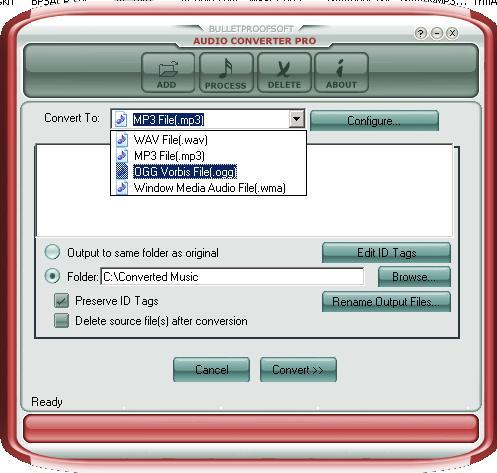
Encode WAV recordsdata into MP3. And Convert MP3 information to WAV. You too can double-click on the file or insert the CD with the audio files to begin playing the file immediately. However, if the audio file has been associated with a special program it could not open in Windows Media Player. Leawo Music Recorder could not solely report and convert CDA audio to MP3, but additionally other audio sources like built-in microphone sound, online audio, radios, local audio recordsdata, streaming audios, etc. It has a recorder characteristic, which isn't accessible within the different 2 methods.CDA to MP3 Converter còn tích hợp tính năng trích xuất nội dụng đĩa DVD sang MP3, WMA, OGG, AAC, M4A với chất lượng âm thanh tốt. I select the mp3 profile. I choose the vacation spot. The one choice i get ists container. I attempt changing the extension to mp3, and I get a white noise file. I am going with thets option and I get a file with sound, but if I rename it to mp3 it turns into white noise once more.
1 note
·
View note
Link
When Joe Bob Briggs, the not always politically correct but always entertaining and informative horror critic who used to host Monstervision on TNT, returned in epic fashion with a live, all night horror marathon on Shudder dubbed The Last Drive-In, he and Shudder broke the internet. Literally. So many tuned in, that Shudder's feeds were actually down for awhile. Back again this past Thanksgiving with Dinners of Death, it was time to make a statement.
Dinners of Death, a four-movie marathon curated by Joe Bob and featuring a "nasty dinners/Thanksgiving" theme, once again blew up the internet, trending throughout the night on social media. Just like with The Last Drive-In, horror fans showed up, because like last time, this was another chance for fans to "get together" and share in one massive marathon/sleepover where we got to watch and discuss the genre.
While introducing the fourth and final film, Blood Rage, Joe Bob made the following statement regarding just that:
Have you ever watched a great movie, on your tablet, on your laptop, on your phone and as the closing credits roll, you feel a profound sense of loneliness? Has that ever happened to you? Cause there's a sense when the narrative ends somebody should've been there with you. That the experience was intended to be communal. You were supposed to be with other people, and so the joy from the experience is bittersweet...People ask me, why are there so many horror bloggers? Because many hardcore horror fans grew up as misfits, they had to sneak around so their parents wouldn't know what they were watching, and they missed the community of fellow horror devotees, and so now, they get to talk about it, cause they're grown up, they're looking for soulmates...(Netflix) believe(s) not just that drive-ins are dead, or movie theaters are dead, or live performance places are dead, they believe the idea behind Epidaurus itself is no longer needed by our inner psyches...well I don't think so, and that's why we do it this way. Even though Shudder is a streaming service, we do something that's against the religion of the other streaming services. We ask people to show up at a particular time for a marathon that can't be downloaded right away. We ask people to join with us on social media as we watch the movies together, as a group, in real-time, and we even interrupt the movies, we put the movies on pause so that we can talk about them...we focus on the other side, the audience, hungry for shared experience."
Unsurprisingly, Joe Bob was spot on. I can attest to everything he said as being one hundred percent factual. For those that are newer to the genre, you have to understand, it has become much more acceptable these days. From the introduction of horror films through the nineties which I grew up in, they were considered to be many of our dirty little secrets. If you liked them, you were weird, or an outcast, or a future serial killer, as some of my grandparents. Because of this, I couldn't even wear horror shirts to school without being ridiculed, and I couldn't talk about them without someone thinking I was strange for being so obsessed.
What Shudder and Joe Bob have done is they've given fans a chance to come out in numbers, unafraid of being judged, and allowed them to do what so many of us go through daily life being unable to do: talk horror with people that understand and love the genre just as much as us. Joe Bob doesn't just play the movies. As he says, he takes a break to discuss what we're watching, inspiring the rest of us to get involved in the conversation and discuss the genre that we love so much. It's a unique, wonderful experience, and something which I wish had been a thing when I was a kid.
Perhaps more impressive than creating a discussion between fans is what else Joe Bob mentions. Like he says, he commits the ultimate streaming service "sin" by asking everyone to show up at a designated time to watch, instead of just dropping the whole damn thing immediately onto Shudder for us to digest whenever we feel like. This is the part which other streaming services should take notice of, because fans have turned out in HUGE numbers to do exactly what these services seem to think is impossible.
Joe Bob Briggs and Shudder made a statement the other night. Get on the train, or be left behind. The Last Drive-In has proven that the horror host/hostess is not only not dead, but there is a greater hunger for them than ever! Other services would be smart to follow along and begin looking for their own horror hosts/hostess.
I'd have to imagine Shudder is also interested in acquiring more hosts for other shows so that they can do this more often and own the market. This is why I recently began a campaign to get Felissa Rose, aka Angela from Sleepaway Camp, her own show on Shudder. Throughout the night, she participated with fans and expressed her knowledge of the genre as well as her sparkling personality, reassuring that she would make a perfect hostess for a show in which badass horror ladies watched horror and discussed the genre from a female perspective. Imagine being able to tune into The Last Drive-In AND a female oriented version with final girls like Felissa! Best of all, she is totally into the idea! You can join in on that campaign by letting Shudder know how you feel with #FelissaOnShudder, and don't forget to follow Felissa as she is an incredible person who is great to her fans.
In the meantime, we can't wait to see more of Joe Bob this Christmas, and hope that this is the only beginning of the resurgence of the horror host/hostess, and an unforgettable era for horror fans. Who knows, with some time, other streaming services may finally take advantage of what is happening here. Proud to be a part of this great horror family.
If you haven't already, you can now stream the entirety of Dinners of Death on Shudder to hear all of Joe's mind-blowing rants.
#joe bob briggs#horror#movies#shudder#monstervision#the last drive in#dinners of death#marathon#television#streaming#netflix#community#group experience#statement#horror fans#horror hosts
4 notes
·
View notes
Text
Google Stadia, Australia and the Impending Game-Streaming War
New Post has been published on https://gamerszone.tn/google-stadia-australia-and-the-impending-game-streaming-war/
Google Stadia, Australia and the Impending Game-Streaming War

The future may well prove that OnLive was ahead of its time. Like Timothy Dalton’s serious Bond take before Daniel Craig, or Boss before House of Cards, OnLive may have been that necessary sacrificial trailblazer whose death leads to the next down-the-track leap.
For those unaware, OnLive was the first game-streaming service of note. It’s now gone the way of the dodo, but the idea was as straightforward then as it is today for surviving services: instant on. No need to physically own a game. No need for a high-end PC or the latest console. Just a compatible device and a high-speed internet connection.
The catch is that game-streaming services require adequate, stable bandwidth to be playable.
When OnLive fired all its employees in 2012, Australia’s average internet speed was an abysmal 4.2Mbps. It’s likely why OnLive and other still-alive services like Sony’s PlayStation Now or the online component of Nvidia’s GeForce Now never made it to Australian shores.
OnLive’s DNA may still live on, though, given that Sony bought the service before shuttering it. Sony will no doubt launch some kind of streaming service for PlayStation 5 – PlayStation Now branded or otherwise – and it certainly won’t be alone. EA also has an unnamed game-streaming service in the works. Microsoft has xCloud. But the current big name in what might become gaming’s next big thing is Google Stadia, which is due to launch in select countries this November.
The nitty-gritty of game streaming
The Stadia pitch is that you can open a Chrome tab or smartphone app to stream a game “instantly”. This means no download, no patching, just immediate access. This pitch, however, doesn’t extend to accessing a catalogue of games through a Netflix-style subscription – players must still purchase the vast majority of games on the service for full-price, to then be able to stream them.
Even so, the prospect of streaming high spec games to almost any screen (at some point in the future – the launch is more limited) is a major reason why companies are falling over themselves to be involved. Instead of there being millions of compatible gaming devices, the number stretches to potentially billions. Google, for instance, has showcased Stadia’s potential on older PC and Mac hardware, streaming Assassin’s Creed Odyssey to them from a specced-out gaming PC.
The point of this demonstration is simple: these older machines wouldn’t be able to install and run the game, let alone play it at max settings. This lack of the need for a dedicated gaming platform lowers the barrier of entry. Chuck in the possibility of streaming directly to compatible TVs, smartphones or tablets, and it’s easy to understand why game streaming is a big deal for those companies with budgets big enough to back the R&D.
In terms of the actual process of game streaming, the upload bandwidth requirements are less important than download because the main thing being transmitted from the player’s end is control inputs. The download bandwidth requirements, though, include all of the game video and audio, which scale upwards based on each incrementally increasing fidelity metric.
The Stadia pitch is that you can open a Chrome tab or smartphone app to stream a game “instantly”.
“
For Stadia, Google recommends a minimum download speed of 10Mbps for 720p gaming at 60 frames per second (fps) with stereo sound. Bump that up to 1080p/60fps with 5.1 surround sound (the max resolution for free Stadia users) and you need 20Mbps minimum. Jump up again to Stadia’s current maximum of 4K/60fps with 5.1 surround sound and you need at least 35Mbps of dedicated download bandwidth.
Google has also been talking up future leaps to 8K resolution and up to 120fps, which would likely translate to at least double the download bandwidth, unless bandwidth improvements can be made within the technology. Still, the prospect of a minimum of 70Mbps for fidelity lovers streaming in 8K is a giant bandwidth pill to swallow.
Consistency is important, too, as the real-time nature of gaming means that, unlike video, it can’t have breathing space in a buffer. The other challenge is data usage. Extrapolating Google’s minimum bandwidth estimates, 720p gaming uses approximately 4.5GB per hour of gaming, with Stadia’s 4K/60fps option stretching to a cap-destroying 15.75GB for every hour you play.

The need for speed
Australia isn’t on the initial launch roadmap for Google Stadia, though it may be one of the countries that Google targets from 2020 onwards. This is likely an infrastructure consideration, given we don’t have Google data centres (yet?), even if we do have a Google Cloud Platform.
Regardless of where you’re located, there are three key player-side considerations when it comes to any game-streaming service: download speed, latency and minimal (ideally zero) data loss. Conceptually, even these are problematic in Australia, especially when you account for the reality that no matter how fast the back-end architecture of a game-streaming service is, it’s at the mercy of a player’s internet connection.
According to the Speedtest global index, Australia’s fixed broadband average at the time of writing is 38.54Mbps (57th in the world), compared to 119.09Mbps in the USA (7th) and 61.02Mbps for the UK (41st). (The USA and the UK are two of 14 launch countries for Stadia.) While comfortably above the minimum (10Mbps) and 1080p (20Mbps) Stadia download requirements, Australia’s average fixed broadband speed is not comfortably above the 35Mbps needed for 4K game-streaming. It’s also worth considering that the internet’s busy period is 7pm to 11pm every night, where user demand slows things further. This means it’s possible that average would drop below the 35Mbps required to stream 4K Stadia games.
For comparison, Italy has the slowest average fixed broadband speed of the 14 Stadia launch countries, but that’s still 53.89Mbps: comfortably above the 35Mbps requirement.
Australia’s average fixed broadband speed should improve once the NBN rollout is completed and as more Australians connect to the new access network. Additionally, if NBN follows particular upgrade paths in the future, it should bring copper/fibre hybrid technologies closer to the current max consumer fibre speeds.
Australia’s mobile internet fares much better: we’re ranked fourth on the Speedtest global index with an average download speed of 63.2Mbps. That’s faster than the UK average for fixed broadband, but there’s a big catch. Australia doesn’t really have mobile plans with unlimited data at these speeds. We do have unlimited-data mobile plans, but they’re either fully or fine-print capped (once you reach your data cap) at a paltry 1.5Mbps.
With 5G on the way and as consumer data demands grow, that may change. But given that 5G depends on device compatibility and telcos treat data as though it’s as scarce as helium, this network upgrade isn’t likely to change much, at least not in the short-term.
Beyond the need for speed
The bigger catch of game streaming is latency, particularly for those living in regional locations in Australia. In these locations, the only internet options are satellite or fixed wireless, where the pings can be high (particularly for satellite) and reliability is impacted by total users and adverse weather.
Even fixed broadband internet users are at the mercy of server locations for a hypothetical Stadia rollout in Australia. If, like Microsoft’s Azure data centres, servers are only positioned on the east coast of Australia, those in the far west and north of our expansive country will have higher latency. To put that in context, there’s lower latency between the east coast of Australia and New Zealand than there is with Perth in Western Australia.
Put simply, the farther the distance, the higher the latency. The higher the latency, the more the real-time illusion of game-streaming is broken and input delays are more noticeable, among other detractors.
Data loss is the final concern, and while there are controllable factors within the home, loss can come down to external networks outside of the player’s control. By way of example, my Telstra cable connection was incredibly reliable for the first year (outside of the odd day-long outage). It’s now basically unusable for any live-streaming service because of data loss care of sporadic 10-second dropouts.
The higher the latency, the more the real-time illusion of game-streaming is broken and input delays are more noticeable, among other detractors.
“
With the NBN arriving in my area next year and after a year of fighting, Telstra tossed my case in the ‘too hard’ basket and stopped trying to fix it. I was given bill credit for the lack of reliability but, honestly, I’d rather be paying full price for a consistent connection, especially because that all-important r-word is the first adjective in Telstra’s internet sales pitch.
Outside of these dropouts, my latency is an impressive 7ms with an above-spec 112Mbps download bandwidth. Incidentally, this bandwidth is fast enough to pass the Google Stadia bandwidth test with a big green tick.
What’s less viable for Stadia or a similar game-streaming service is my Optus phone internet. I get two bars of 4G reception in my area (10km from the Sydney CBD), and while that equates to a respectable 14ms latency, the download speed is around 35.5Mbps. It doesn’t help that it’s not the most reliable of connections. Additionally, while 60GB of data is adequate for my monthly needs, it would only allow for around 6.5 hours of 1080p streaming on Stadia’s 20Mbps recommendation.
Granted, my phone plan is more than a year old. With a top-tier plan today, I could score 200GB of data from Optus, which would allow for 22 hours of monthly game streaming (and nothing else) at the same resolution on Stadia. That’d cost $105 per month (excluding any handset repayments) on top of my home internet.
Cracking the latency code
The challenge of any form of wireless technology – Wi-Fi, mobile or otherwise – is that it includes inherent latency. It’s likely why the Google Stadia founder’s edition includes a Chromecast Ultra, the top-end gizmo that’s also best used with its included ethernet capability. The Stadia requirements list this particular Chromecast model as the minimum for using Stadia on a TV.
What Google has cleverly done is push Stadia wannabes towards its proprietary controller. At first glance, it looks like just another average controller. The cleverness comes from the inclusion of a link between controller and Stadia gaming server (via Wi-Fi), as opposed to being paired to the device displaying the screen. This has the potential for lower noticeable input delays.
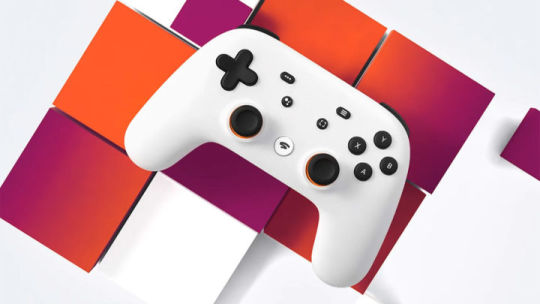
Clever controller tech.
Users can opt for their own controller or keyboard/mouse combo, but this will introduce additional latency. Even though this ultimately amounts to milliseconds of latency, it can start to add up to noticeable delays between control input and onscreen responsiveness.
This was the case with my xCloud experience at E3, with an Xbox One controller connected via Bluetooth to a mobile phone that was streaming Resident Evil 7. While the major detractor was the screen darkness of this particular demo, the adequately lit areas showcased a noticeable delay between joystick camera movement and onscreen actuation.
Game-specific impressiveness
There is a chance these kinds of game-streaming input delays may be less noticeable to more casual players, for whom these types of technology may be more relevant than the dedicated gamer crowd who likely own their platform/s of choice. Mobile games are often designed with control limitations in mind, and the same logic may well prove true in terms of the type of game that’s best played via game streaming.
Competitive multiplayer shooters are out for now and, unsurprisingly, almost entirely absent from the list of Stadia launch titles (though Google notes there will be multiplayer games at launch). Doom and Doom Eternal are potential exceptions to this, but there’s more on them below. It’s not a stretch to imagine that other games like Cuphead and Dark Souls, which rely on immediately responsive control feedback, are going to be a challenge for game-streaming services because of the inherent latency.
Competitive multiplayer shooters are out for now and, unsurprisingly, almost entirely absent from the list of Stadia launch titles…
“
It’s interesting that the rise of controllers like the Xbox Elite and Scuf, which champion the competitive advantages of lower latency, are on the rise alongside the birth of a gaming service that includes inherent latency. On top of this, Sony and Microsoft have talked about the high frame rate potential of the next-gen consoles, which is another step closer to lower latency (albeit perceived, in this instance).
Even TV manufacturers have included higher-refresh-rate ‘game modes’ for years, and newer-model teles offer 120Hz refresh rates and FreeSync support. In this respect, a new technology that inherently includes latency seems like a step in the wrong direction.

Devilish delights
While the bigger focus is on core game-streaming technologies like Stadia, Bethesda swooped into the race with a surprise announcement at E3 2019: Orion. Initially, it sounded as though Orion was another competing service. Instead, the pitch for the patented tech is as a Pied Piper-like middleware software solution to improve the hardware-focus of game-streaming services.
Orion is implemented at a game-engine level and is built to reduce two all-important factors: latency and bandwidth. These improvements are potentially significant, too, with the claim of latency reductions of up to 20 percent per frame and a 40 percent reduction in the required bandwidth.
Orion is implemented at a game-engine level and is built to reduce two all-important factors: latency and bandwidth.
“
According to the spiel, technically, Orion can be used on any game-streaming service, which means it’s there to complement the Stadias and xClouds of the gaming world, albeit with one big caveat: developers, publishers and streaming providers have to choose to use it.
If the theory is true in application, Orion has the potential to lower bandwidth requirements and data usage. The Orion official page even claims “imperceptible latency” in reference to “twitchy shooters”, on top of this huge-if-true statement: “a wider availability, making quality play available to players living far from data centers.”
Orion is likely why both Doom and Doom Eternal are the only fast-paced shooters among the launch titles; it’s a chance for Bethesda to showcase its tech. Both shooters have multiplayer but the higher PvP time-to-kill (TTK) makes them less in the vein of Counter-Strike and Rainbow Six Siege, and closer to the likes of Destiny 2. The extra survivability of a higher TTK shooter is better suited to the inherent latency of game-streaming services.
Game-streaming downsides
There are more game-streaming detractors outside of those previously mentioned. Interruptions in the connection, be it player or server side, result in choppier frame rates, graphical artefacting and input delays. Even a dip in connection speed can reduce resolution, introduce latency and equate to more noticeable on-screen compression.
At best, these are immersion tarnishes; at worst, tech destroyers. Google does note that Stadia will automatically adjust “to deliver the best possible visual quality at all times” during bandwidth fluctuations, but if that’s a fidelity-at-all-costs mentality, something has to give, and that may be responsiveness.
Even a dip in connection speed can reduce resolution, introduce latency and equate to more noticeable on-screen compression.
“
In terms of mobile devices, Stadia is curiously only limited to Google Pixel phones and Chrome OS tablets for the time being. Google has confirmed this will change, but it’s odd that other modern Android devices can’t also run the tech. Given that Stadia will be accessed via app, conceptually, it seems straightforward to lock out incompatible phones and tablets via Android OS version.
If a player’s connection drops out, the server will stay live for a few minutes. This means that even Google Pixel owners are at the mercy of internet coverage to ensure they can reconnect in time to resume or save their game. Australia, for instance, has great mobile coverage in cities, but in smaller city centres and in rural areas, the coverage starts to shrink and speeds slow.
Game access in general is also a big issue. The US$9.99 monthly fee for Stadia Pro grants access to a limited library of free games, discounts and 4K streaming, but you’re utterly dependent on an online connection to use Stadia, which means no form of offline gaming. The same is true of the free version of Stadia, and in both cases most of the games on the service cost full price to purchase. Google does note, though, that purchased games will be playable on Stadia even if they’re removed from the library.

It’s also worth flagging that older compatible devices will be at the mercy of their screen technology in terms of resolution (unless Stadia supports Xbox One X-like supersampling) and refresh rate, which may not be capable of frame rates beyond 60fps. Finally, unlike a service like Netflix, Stadia only allows for a single stream, albeit a single user can use this single session across unlimited compatible devices.
Perks of game streaming
It’s not all bad news, though. Stadia and other game-streaming services effectively eliminate piracy, which is great news for developers and publishers. Lower device requirements mean a lower initial barrier of entry to play games. Playing Stadia with a stable online connection is reportedly comparable to local game-streaming services, like Steam Link and GeForce Now.
On top of this, because the games are streamed and not installed, there’s no need to make space for increasingly growing game installs. Additionally, games are patched on the server side (at Google speeds for Stadia), meaning you don’t have to wait for patches to download before you’re ready to play. This, in particular, is a gaming-godsend for players who have limited gaming time that may be chewed up by waiting for patches.
There’s also the early pledge from Google that Stadia will support cross-platform multiplayer. This is, of course, reliant on other platforms coming to the party. Still, it’s a strong pro-player stance that sets an example for other parties to follow suit. Mind you, for that to work, latency really will have to be in line with other platforms.

Future potential
Stadia’s Director of Product Andrey Doronichev had this to say recently in a Reddit AMA: “To be clear, Stadia Pro is not ‘Netflix for Games’ like some people have mentioned, a closer comparison would be like Xbox Live Gold or Playstation Plus. The Pro subscribers get 4K/HDR streaming, 5.1 sound, exclusive discounts and access to some free games. Roughly one free game per month give or take. Starting with Destiny 2 (yay!).”
So… no broad catalogue, just a drip feed of free titles, with all others to be purchased at full price. That being the case, what is the use case for streaming that makes this worthwhile? If you don’t have a high-end gaming PC, a PS4 Pro or an Xbox One X maybe it makes sense. But if you don’t have that entry-level investment in gaming are you really interested enough to pay a monthly fee? If you do buy in, will you hog the bandwidth in your house to the point that a flatmate or partner may not be able to do what they want to do online?
Ultimately, services like Stadia need to prove that the many potential headaches associated with them – at least early on – are actually outweighed by the advantages. Would you, for instance, take instant-access gaming that’s potentially lower fidelity and higher latency every single time you want to use it over simply waiting for an install at the beginning and then having consistent, excellent performance from that point on? I think that trade-off would be much easier to sell if Stadia was indeed offering up a Netflix-style service, rich with content. The ability to browse through a large catalogue and try anything you like instantly would be pretty compelling. But that’s not what Stadia is going to be at launch.
Stadia and other streaming services really do feel like they raise more questions than they answer, so for now, perhaps it’s not such a bad thing that Australia isn’t part of the initial rollout. This vision of the future of gaming seems like it’s going to feel pretty inessential for some time to come. Mind you, it’d still be nice to have the internet to support it.
Nathan Lawrence is a freelance writer based in Sydney who writes about games and film, and is a shooter specialist. Say hey on Twitter.
Source : IGN
0 notes
Text
Download Netflix On Computer Mac

Netflix is a giant in the industry of streaming services and has maintained that position for a long time. Windows users along with mobile platforms enjoy the Netflix Application, the ability to download and stream at one’s own convenience. This definitely has brought up the question for many MacOS users: Is Netflix available for Mac? Is there an application? How do I download from Netflix on Mac?
All these questions, along with how to use and download from Netflix on your MacOS will be answered in this article.
Contents
How to download Zoom on your Mac. If you've never used Zoom before, clicking an invitation link or heading to the main Zoom website to join a meeting will automatically prompt the app download. Netflix Video Downloader allows you to download select TV shows and movies from Netflix limitlessly to watch offline later on your computer, mobile phone or tablet. This is great for when you're on the go and don't need to worry about streaming over a cellular network or without internet access in the flight. Netflix is a video streaming application that allows you access to the service's huge library of movies and TV shows.Netflix gets a Windows Modern UI application for Windows 8 with a beautiful interface. From the home screen, you are given 3 of your most recently viewed videos and your Instant Queue.
1 Netflix for Mac (Everything You Need to Know)
1.3 How to Download Netflix Content on Mac
Netflix for Mac (Everything You Need to Know)
Here’s everything you should be knowing about this.
Is the Netflix App Available for Mac?
Sadly, no. For unknown reasons, Netflix does not have a desktop application for MacOS, even though it has an application for Windows, Android, and iOS. This means that to stream Netflix Content, you will have to visit netflix.com on any of the following browsers. Here is a list of the supported browsers with the streaming quality:
Google Chrome up to 720p
Mozilla Firefox up to 720p
Opera up to 720p
Safari up to 1080p
How to Use Netflix on MacOS
To use Netflix on your Mac, open any of the supported browsers: Google Chrome, Mozilla Firefox, Opera, Safari Browsers.
In the Web browser, visit netflix.com.
Select the Sign In Option on the top right corner
Enter your Credentials
That’s it! Start using Netflix for your Mac and stream any available content you want!
How to Download Netflix Content on Mac
There are tons of websites claiming to provide the Netflix Application for your Mac and that you can easily download Netflix content. However, most of these Netflix Apps for Mac are infested with malware and will harm your Mac instead of actually helping you download Netflix content for Mac. Thus, there is no straightforward way with which you can download movies and shows from Netflix and watch.
However, here we have compiled 3 methods that you can use if you are really desperate to watch downloaded content for Netflix on your Mac. Let’s get started!
1. Download Windows on Your Mac
Since Netflix is available for Windows, you can download Windows on your Mac, run it and install the Netflix app there to watch the downloaded content. It may be a bit tedious, but if you really want to download Content from Netflix, it works.
Boot Camp is a tool present in MacOS that can help you install Windows for your Mac. Here is a full guide on How to Run Windows on Mac.
Once Windows has been installed, you can visit the Windows Store and Search for the Netflix App
Get the Netflix App from Windows Store, and then log in to start using and Downloading from Netflix!
2. Using Other iOS/Android Device: iPhone/iPad/iPod Touch

Since Netflix App is not available for your Mac, to download and stream content you can use your mobile devices such as the iPhone, iPad, or an Android Device that supports the Netflix application. You can easily download content from Netflix on any of these platforms and stream them using a casting service.
This is a pretty simple method to download and watch Netflix content on your Mac, even though it may not be as convenient as downloading on your Mac computer itself.
3. Using Screen Capture
Although Netflix is taking measures to prevent users from, it is a risky method, but one that you can take to download Netflix content. Basically, all you require is a Screen Capture software for your Mac, and stream the entire movie/TV Show.
Recording Netflix content, however, come with huge risks as capturing and keeping it yourself might still be fine, but distributing the downloaded content with others is illegal.
We would advise against this, but if you really want the downloaded content from Netflix for Mac, you can do this.
Popular Screen Capture Software for Mac

Here’s a list of some Screen Capture applications that you can use on your Mac while capturing from Netflix:
OBS Studio
Monosnap
Apowersoft
TinyTake
Screencast-o-Matic
Jing
QuickTime Player
If you want other software, you can find them on the internet. These software help you download content from Netflix on Mac.
Final Verdict
Even though Netflix is not available as an application for Macbook (yet), you can stream it using the Netflix website very easily. As for downloading content, that might be a bit of discomfort to Mac users, but we have provided the best possible ways for you to do that. If you have any queries regarding the information or methods described above, you can drop us a comment below and we’ll do our best to get back to you with a relevant answer.
Keep on reading more interesting articles on our website.
Related Posts:
There are abundant ways you can try on if you wish to download Spotify music to MP3 or other plain formats on your computer. But most of the third-party softwares are simply a recording tool with limited output audio quality and 1:1 recording speed. Among all of the Sidify Music Converter, unquestionably, Sidify Music Converter is a hassle-free and handy tool worth trying. As Sidify Music Converter is a professional and unique Spotify Music Downloader and speedy converter, that assists you to directly download Spotify music to a computer with great output audio quality and 5x faster speed.
Key Features of Sidify Music Converter
Sidify Music Converter
Record Spotify music/Playlist to MP3, AAC, FLAC, WAV or AIFF
Preserve the quality of the original sound
Keep ID3 Tags and all metadata
Highly compatible with the latest Windows & macOS and Spotify
Free updates and technical support
Tutorial: How to Download Spotify Music to Mac/ Windows Computer?
Download Sidify Music Converter, install, and launch it on your Mac/PC. In the following guide, we'll show you how to easily download Spotify music to a computer with Sidify Music Converter.
Equipment Preparation:
A Computer running Mac OS or Windows OS
Installed the latest version of Spotify
Sidify Music Converter
Step 1Import Music from Spotify to Sidify
To start with, just click on ' icon and then drag and drop any music file or playlist from Spotify to Sidify adding window.
Step 2Choose Output Settings
Then click the setting button to change the basic parameters (Including Output format, Output quality and Conversion mode, etc.). Here you can choose format as MP3, AAC, FLAC, WAV or AIFF, adjust output quality up to 320 kbps.
Tips: Sidify program supports saving the output audio into Artist, Album, Artist/Album or Album/Artist folder for meeting various user's needs.
Step 3Start Conversion
Tap the 'Convert' button to downloading Spotify music to plain format with ID3 tags kept after conversion.
Step 4Find the Well- downloaded Files
After conversion, you can click on the 'Converted' button to easily find the well-downloaded MP3/AAC/FLAC/WAV/AIFF file in the top right corner.
Download Netflix On Computer Mac
Download Spotify for Android, iOS (iPhone,iPad) and Windows Phone, etc.:
Although Spotify is available for all kinds of mobile devices like android, iOS and Windows phones, there are still many restrictions. Now, you get the digital audio format Spotify music, thus you can enjoy Spotify music like common music files freely even without installing Spotify app and network connection. You just need to transfer the converted Spotify music from computer to devices for playing, such as car players, iPod, iPhone 8, Zune, PSP and Samsung Galaxy S8, etc.
Video Tutorial: How to Save Spotify Songs to Computer:
Note: The trial version of Sidify Music Converter enables us to convert 3-minute audio for sample testing, you can unlock the time limitation by purchasing the full version.
Related Articles
Download Netflix On Computer Macbook
Convert Netflix Videos to MP4 Format
Netflix Video Downloader is a professional tool for downloading Netflix movies and TV shows to your local computer, keeping audio tracks and subtitles. If you are looking for a simple and efficient way to save Netflix videos as MP4 files, it's the perfect solution recommended for you.
Can I Download Netflix On My Mac Air
Read More >

0 notes
Text
Graphic Design Trends To Dread, Delight In and Feverishly Await
What Will 2019 Bring in Terms of Graphic Design Trends?
The ball is soon to drop and then it will be all eyes on the horizon and what trends we are seeing, anticipating and, perhaps, won’t ever come to fruition. Enjoy this trend-watch piece from our panel of industry experts and leaders. They take on everything from what’s going to be out in the upcoming year, where branding is going, industry changes facing designers, tech innovations impacting how we experience design and more.
Photo by NordWood Themes on Unsplash
Tell Your (Real) Story
Consumers have reached a saturation point. Fatigued by an increasingly noisy, chaotic, and complex world, they will continue to invest in fewer brands. Constructed brand narratives will become less effective and outdated, as more informed consumers seek out labels and brands that bring real value to their lives. To be successful, brands will need to embrace authenticity, and commit to creating quality products that genuinely provide tangible benefits for their audience. — Joe Flory, Design Director – FINE
The Empowering Itch of the Creative Niche
To a zealous degree, curiosity is advertised as a cardinal quality to behold across design disciplines. A staple ingredient (in the steadfast portfolio of desired designerly traits) to generate creative ideas, tap into creative angles, embark on creative paths—all toward executing a creative vision.
On the job, curiosity is a designer’s intellectual edge. Beyond the job, curiosity is the compass pointing to new directions in the creative form of side projects.
Adjacent to their daytime roles, UX Designer, Liz Wells, collaborates with brand communications manager, Katie Puccio, to publish the newsletter “Desk Lunch,” issued to the communities of creative women and non-binary folks. Graphic designer, Matthew Wyne, seized his obsession with cocktails by illustrating the collection “Letters and Liquor,” where he dives into the history of lettering associated with cocktails, from the 1690s thru 1990s. Carissa Hempton, with her husband, Paul, co-launched “Print Prologue,” a series of tangible and web-based tools focused on the details of small-format printing.
Curiosity, paired with conviction, flows through these examples of designers exploring diverse interests. Along with scratching one’s itch, harvesting a creative niche helps keep one vital mission alive: to never stop learning and growing. For designers, side projects are not merely pet projects, they’re passion projects. Creative freedom maximized. — Nate Burgos, UX Designer & Content Strategist – 50000feet.com
Less Is Still More, But…
I see minimalism sticking around in print, packaging, and digital. It’s a classic design choice, and it’s not going anywhere, but I would like to see a resurgence of vivid color mixed in with minimalism. Typography is going in bolder directions with unexpected font pairings, and even messy typography looks are becoming the norm since they make people stop and pay attention in a world of waning attention spans. I also see more doodles and hand-drawn personal touches popping up in design, for a more friendly style (that I actually really like). — Ashley Milligan, Art Director – FINE
‘Fluid’ Brands
Is it just me or were we able to break more brands in 2018? I’d like to see this trend continue in 2019 as brands finally realize that they need to loosen up their rigid self-indulgence and become team players.
Consumers don’t buy a single brand anymore: they subscribe to a lifestyle, and a lifestyle will always demand more complexity than any single brand could ever provide. This means big brands need to rethink their traditional tactics and outdated campaign models (saying goodbye to the overpriced, overhyped ‘big ad’ moments), instead looking to interesting partnerships and curated collaborations that are born from the consumers integrated lifestyle.
Courtesy Stefan Tauber – SET Creative
Perfect example: Fendi’s collaboration with Fila. In the past, nobody would have expected an Italian high fashion house to collaborate with a sportswear brand like Fila. Yet “Fendi Mania” showed just how powerful a collaboration like this can be: this well-calculated move transcended hype by being anchored in the consumer’s lifestyle choice that sees them blend high fashion with streetwear seamlessly.
2019 will be all about curated brand partnerships, with agencies helping to define the best and most powerful ways to bring these curated partnerships to life through experiences like activations, pop-ups and live events. — Stefan Tauber – SET Creative
Format Flurry
In the last couple of years, with more and more advertising opportunities across all digital platforms, we’ve naturally seen an increase in delivery formats for the content we create. As designers, we are going to need to be extremely aware of this since, when we create a spot, we are no longer locked into a 16:9 aspect ratio for TV broadcast.
People are consuming and creating vertical video content on their smartphones, and this format has become a new way to look at the world (a narrower, less cinematic one, in my opinion). Naturally, both the entertainment and advertising industries have started generating content that’s going to be viewed that way and, as designers, we need to be as flexible as ever in regard to aspect ratio or even framing and composition. TV spots need to be easily adaptable for viewing in the 1:1 square format of a social feed, or the longer vertical formats of stories on Instagram, Facebook and Snapchat. Also, as VR and AR (which give viewers control over the point of view) steadily become more mainstream, designing without ties to a specific container is becoming key.
I have found this to be a significant change that requires a new approach from a design standpoint. One that we need to consider and be aware of from the concepting stage…relying more on procedural graphic languages and guidelines rather than on individual frame compositions. — Duarte Elvas, Creative Lead – Sarofsky
The ‘New’ of Branding
Dynamic/animated typography systems will reach fever pitch and broader adoption in the more mainstream visual landscape.
The work pioneered by Dia in the last few years will expand to move past visual tests and into formalized branding systems. This is already happening within the traditional mediums of brand design and communication and leading brands are adopting the same visual language.
Courtesy David Schwarz – HUSH
The notion of branding as an active, dynamic system that can morph and mutate fluidly from medium to medium, technology to technology, will become more mainstream. Dia’s demos of typography within the augmented reality space forecast the way in which our urban, retail and workplace environments will become a modern-day version of Brown and Venturi’s “Las Vegas,” in which signs and symbols permeate our (augmented) visual landscape in trade for valuable information (e.g. wayfinding), entertainment content (e.g. narrative storytelling), and communication (e.g. your Instagram feed within your augmented world). — David Schwarz – HUSH
No More Shoehorning
We’ve seen (yet) another year of brands shoehorning digital and technology tactics into creative experiences (or worse, defining the creative solution as a technology tactic), often at the cost of the originality of the idea itself.
Courtesy Dan Carter – SET Creative
Younger audiences are drawn to immersive, tactile, high-quality experiences, often through a nostalgic lens; they don’t want the latest gimmick, especially when it creates a higher bar to entry (a headset, an app download, a tablet to hold). I’d like to see brands look inwards to either their own legacies or the younger interests of their audiences to define new places to open up meaningful experiences.
Authentic experiences trump digital tactics every time, simply because tactics shouldn’t lead creative thinking: they should serve it. — Dan Carter – SET Creative
Design and New Tech Innovations
I’ve been thinking a lot lately about the monolithic design identity. New technologies are forcing both the process of design and the outputs to be completely rethought. Practices taught in schools and businesses, the rigorous pathways of “Design Thinking,” and the formalized outputs of these traditions seem to be on the chopping block. Why?
Because modern companies move at a rate of change never before seen and thus, the design frameworks are breaking. Specifically, the static brand system, unaware of the changing environment around it, is rendered useless as new technology (and new technology companies) morphs, mutates and advances.
Courtesy David Schwarz – HUSH
Identities and visual design systems need to be treated more like molecular physics (yes!). In molecular physics, scientists can only predict where an electron is at any given moment in time. Why? Because it’s changing its position so fast, all the time. If designers thought about modern organizations like electrons, we’d see flexible, iterative, real-time design systems that reflect an organization at a moment in time, and in every instance into the future.
How might that come to life? Well, looking at Dia’s work above, or Zack Lieberman’s augmented reality tests, or even some branding and signage systems recently developed for conferences, means that brand identity can be more fluid – more like a lens that reveals what’s actually happening inside an organization than an idealized monument. — David Schwarz – HUSH
More Illusion Fun, Please
Now more than ever, we’re seeing people shoot their own little Instagram stories of “blowing smoke” out of their mouth (but it actually just involves a crumpled piece of paper), and people tracking AR graphics onto their face with the latest improved two-camera smartphones. Watching the explosion of illusion fun that people have with their phones has proven that anyone has it in them to be super-creative with a camera.
vimeo
It’s not a threatening development, but one that’s actually kind of beautiful. The things that I love to make that people seemed to love to watch, also appear to be things that people love to make themselves, too – which is awesome. So when it comes to video and filmmaking in the year ahead, I find myself thinking about how to make those mass creative abilities even more accessible.
The film we made for Rag & Bone this year is a testament to that, being tricky with the camera, but also showing how the rigs work within the film. This isn’t about UGC. This is about feeding this creative urge that people have as much as possible. Did you know you can do a Hitchcock dolly zoom yourself with your smartphone? You can. And your friends and followers will love it. More of that in 2019, please. — Aaron Duffy – Special Guest
Courtesy Andrew Geller – 1st Ave Machine
Stories to Make Them Engage
We are in such an exciting time for storytelling, there are new platforms popping up all the time and new ways to leverage them for entertainment. One 2018 trend that I hope continues is the experimentation with storytelling that is happening across these new platforms.
This year has seen a surge in experimental storytelling projects, such as SKAM on Facebook Watch that actually distributes the content at times that are relevant to the story (AM vs PM, etc), or the narrative project we produced with James Patterson for his upcoming book called The Chef where viewers actually experience a novel on Messenger, and read/watch/interact with the narrative.
People are currently embracing these new stories and I don’t see this stopping. I’m also encouraged by the openness of viewers to engage with something totally new. 2019 will see a lot more of this, I’m sure. — Andrew Geller – 1stAveMachine
Brands, You Are Being Watched
As a result of social media, brands are more directly engaging with their audiences. In prior decades, consumer groups were polled. But brands now have unsolicited direct and immediate lines of communication and feedback loops via comments, shares, and likes.
This proximity is creating a heightened-level of accountability, as brands no longer have as much leeway for missteps. It also challenges the way brands interact with audiences. With targeted marketing now flooding feeds, the initial curiosity of online ads has been swiftly replaced with skepticism and scrutiny, so to be genuine now involves stepping beyond the saturated social marketing norm and moving instead toward immersive experiences. — Mehran Azma, Art Director – FINE
Bring It In-House?
Brands face more marketing decisions than ever before. One is the constant pressure to find cost efficiencies, which begs the question, should clients depend less on the capabilities of outside agency partners and more on the depth of knowledge that an in-house team can bring?
While the trend of expanding in-house capabilities is not new, 2019 will be a year where we see a true growth period for this trend. As a response to this titanic shift in the industry, agencies should consider new, sustainable models of the client-agency relationship. How can agencies play a supporting role to these in-house teams? What do brands’ in-house departments need in order to deliver the thinking that agencies have historically provided? These are all questions that will be addressed more directly in 2019, though what works and what doesn’t may not be determined for years to come.
What is clear is that agencies can still serve a valuable role for clients. They can bridge gaps that in-house agencies have and bring diversity of thinking, so that internal teams aren’t just grading their own papers. While many see it as a threatening time for agencies, it is also a time of huge opportunity to shift the focus back on clients’ needs and away from hidden agendas that can ultimately damage the client-agency relationship. — Jason Henderson, Founder and Chief Creative Officer – Secret Fort
Attention-Getters
In an increasingly busy world, graphic design of all types must work hard to catch the eye. Thus, many upcoming graphic trends are about ways in which you can quickly grab attention. My top three for the coming year are:
Vivid colour
Even in fashion the little black dress has become the little coloured dress because of the need to be spotted on Instagram. Vibrant colour is a great way of being seen and standing out from the crowd.
Less is more
With so much visual clutter, whether on shelf or on screen, minimalistic design simply draws the eye.
The human touch
In spite the rise of the computer, there is an increasing desire for authenticity and originality. In a sea of digital icons and mass production hand-crafted words and illustrations instantly connect with people on a human level.However, grabbing attention is only one element of creating an amazing design. Be aware of the latest trends but don’t just mindlessly follow them for the sake of it. — Sue Bicknell, designer – Brown&co
Healthy Benefits of Creative Retreats
To borrow the concept from media theorist Steven Johnson’s 1997 self-entitled book, “interface culture” readily characterizes our era. It especially consumes the designer’s workflow. As screens morph in scale and scope, the need to fulfill a healthy break from clicks and gestures will sharpen in urgency.
To counter work fatigue, typeface designer, Dyana Weissman, co-leads hiking trips at a state park, the Middlesex Fells Reservation, outside of Boston. Between important tasks, graphic-turned-civic designer, Megan Trischler, shuts herself out of her email inbox to satisfy a seamless, concentrated-thinking zone. Designer and web developer, Kim Goulbourne, maintains her creative fitness by working out, which includes kickboxing, to cope with stress.
In the digital workspace (wherever this takes place), the intensive, even chaotic, effort to realize good design more than welcomes a good reprieve, it demands it. A creative retreat, from a planned escapade to a process adjustment, is a scalable gift to oneself. — Nate Burgos, UX Designer & Content Strategist – 50000feet.com
What’s Out: All Those Hands
Uncommon interfaces without purpose – or as I like to say: people waving their hands to make things move around a screen.
Gestural, human-scale interfaces and visualizations can have an amazing place in experience design. They often get audiences active across distance – which is a huge sensorial and experiential change from the minute micrometers of finger swiping that we do daily.
Courtesy David Schwarz – HUSH
This scale change, alone, has value in certain experiential contexts. That being said, there is a ubiquity of gestural interfaces implemented for no reason other than the technological gag itself (“mom, look what happens when I wave my hands…”). Those remaining will be relegated to the lowest fidelity design contexts.
As more nuanced technologies are invented, and we see broader audience adoption for these modes of interaction, we’ll see a set of refined design interfaces and tools at our command. — David Schwarz – HUSH
What’s Also Out
Chatbots for marketing campaigns
There were a number of marketing campaigns that have used chatbots and AI to generate buzz and attention. But as AI continues to be more intelligent and efficient, we can expect to see less use of chatbots for buzz, and more for customer services and utilities. In addition, we should also expect to see chatbots to be designed in brighter, bolder colors, which greater represents a brand’s voice and tones and gives the bots personalities.
Large, full-screen images
Leveraging immersive, relevant, and engaging images to tell stories has been one of the most used design styles. But on the flipside, it often slows down the performance of the page. Instead of bold images, we can expect to see bold fonts and typography continue to dominate to achieve similar results.
PNG, GIF and JPG
These graphic formats have been used extensively but they are still in pixels, giving them some disadvantages against vector images like Scalable Vector Graphics (SVGs), which won’t affect speed and we can expect to see more of in 2019. — Ming Chan – The1stMovement
Be a Jack of All Trades
An aesthetic trend we saw a lot of in 2018 that shows no signs of slowing down is a look we’ve dubbed: “Internet-y.” Does the internet have an aesthetic? Sort of, in the sense that it encompasses ALL aesthetics, swapping from second to second. From the time you unlock your phone and swipe around to the time you put it down, think of how many different design styles you see. Your Instagram feed, your Google searches, your digital news service of choice. Bright saturated poppy illustrations are next to street fashion photography, and real time game engine renders, and a clip from that Netflix show you’ve really been meaning to start. On the internet, beautifully considered images taking hours of art direction to compose are shuffled next to intentionally crude meme-style aesthetics, and smartphone camera photography, #nofilter.
vimeo
Brands have taken notice. Designers need to stretch their creativity in 2019 beyond a single look or style, as many brands look to embrace a curated cacophony of styles in an explosion of colors and forms. It will pay to be a jack of all trades in 2019. Or better yet, split a project up among a few designers, each bringing their own flavor to one slice of the piece, as we did for our March Madness spot for Google Cloud, or our sponsor reel for the AICP. That way, each snippet can be dripping with the passion of an artist, one concentrated dose of style after another. Let the mind meld begin. –Sean Martin, Creative Director/Director – Gentleman Scholar
Altered Space
I feel the demand for new spatial experiences is on the rise. Increasingly, brands are coming to us, looking to create digital environments that alter perceptions and really get people talking … and I feel designers should take note of this shift.
The good news is that current software and hardware solutions are putting accessible tools in designers’ hands. For example, recent advances in computer vision hardware are now making it possible for almost anyone to scan a room and project graphics, instantaneously.
Leviathan’s 2018 “Metamorphosis” audiovisual odyssey exclusively for the Dolby® Gallery in San Francisco.
This is going to enable more artists and designers to push the boundaries of their work, delivering dimensionally-augmented spaces. Additionally, with the rise of advanced 3D animation and computing power, real-time, generative visuals can become an integral part of creating interactive spaces that resonate with people to create both individual and shared experiences. The beauty of generative design is that it can forever evolve–which adds digital life to each new space. Jump in, you won’t regret it. — Jason White, Chief Creative Officer – Leviathan
Want more on what’s to come in graphic design? Stay up to date with Design News from HOW.
The post Graphic Design Trends To Dread, Delight In and Feverishly Await appeared first on HOW Design.
Graphic Design Trends To Dread, Delight In and Feverishly Await syndicated post
0 notes
Text
(3) The 2 Week Diet | Official Website | Lose Weight In 2 Weeks | Program and Plan | Diet Book | How To Lose Weight In 14 days!
New Post has been published on https://click.atak.co/3-the-2-week-diet-official-website-lose-weight-in-2-weeks-program-and-plan-diet-book-how-to-lose-weight-in-14-days/
(3) The 2 Week Diet | Official Website | Lose Weight In 2 Weeks | Program and Plan | Diet Book | How To Lose Weight In 14 days!
Product Name: (3) The 2 Week Diet | Official Website | Lose Weight In 2 Weeks | Program and Plan | Diet Book | How To Lose Weight In 14 days!
Click here to get (3) The 2 Week Diet | Official Website | Lose Weight In 2 Weeks | Program and Plan | Diet Book | How To Lose Weight In 14 days! at discounted price while it’s still available…
All orders are protected by SSL encryption – the highest industry standard for online security from trusted vendors.
(3) The 2 Week Diet | Official Website | Lose Weight In 2 Weeks | Program and Plan | Diet Book | How To Lose Weight In 14 days! is backed with a 60 Day No Questions Asked Money Back Guarantee. If within the first 60 days of receipt you are not satisfied with Wake Up Lean™, you can request a refund by sending an email to the address given inside the product and we will immediately refund your entire purchase price, with no questions asked.
Description:
My foolproof system and 100% no-nonsense guarantee have convinced thousands to remodel their bodies, lives, and relationships. Here are just a few raving reviews from lifelong fans of The 2 Week Diet…
Amelia Burned 3 Pounds in 7 Days!
“We had this big family reunion coming up and suddenly I realized… I was terrified. I didn’t want to go because I didn’t know what people were going to think. I had a really rough year, and I gained 30 ugly pounds of fat.
After starting The 2 Week Diet plan, I lost 3 pounds in the very first week! And it just kept coming off. By the end of the month, I had completely reversed a whole year of bad eating and laziness. I’m still losing weight weeks later. I can’t wait for Christmas!”
Chris Dropped Half a Dozen Pounds in 14 Days!
“I never saw my weight gain over the years as a big problem, until everything fell apart at once when my girlfriend left me. Years of bad habits all came together at once and I was a mess. After that, I tried all sorts of extreme diets that didn’t work at all. That’s when a friend recommended The 2 Week Diet to me and it’s honestly changed my life. Even after reading it the first time, I was amazed to see how many things I believed about health and nutrition were just dead wrong. After 2 weeks of following the diet plan, I lost half a dozen pounds. It’s amazing, I look great and haven’t had this much energy in years. People have been telling me how good I look, and even my ex gave me a huge compliment last week. Ha, not that I’d take her back. Thanks Brian.”
Diana Kicked 1.5 Kilos in the First week!
“I lost 1.5 kilos my first week on your diet. (I’m from across the pond… that’s about 3 pounds in America.)
By the end of the 2 weeks, I’d dropped 3 kilos. I cannot thank you enough. I don’t know why all the other diet systems fail to deliver these results, but I’m never going to waste my time on them again!
The 2 Week Diet has been everything I needed to get the body I’ve been wishing for all these years and I’m going to do it again to lose even more weight!
Thank you!”
“We had this big family reunion coming up and suddenly I realized… I was terrified. I didn’t want to go because I didn’t know what people were going to think. I had a really rough year, and I gained 30 ugly pounds of fat.
After starting The 2 Week Diet plan, I lost 3 pounds in the very first week! And it just kept coming off. By the end of the month, I had completely reversed a whole year of bad eating and laziness. I’m still losing weight weeks later. I can’t wait for Christmas!”
“I never saw my weight gain over the years as a big problem, until everything fell apart at once when my girlfriend left me. Years of bad habits all came together at once and I was a mess. After that, I tried all sorts of extreme diets that didn’t work at all. That’s when a friend recommended The 2 Week Diet to me and it’s honestly changed my life. Even after reading it the first time, I was amazed to see how many things I believed about health and nutrition were just dead wrong. After 2 weeks of following the diet plan, I lost half a dozen pounds. It’s amazing, I look great and haven’t had this much energy in years. People have been telling me how good I look, and even my ex gave me a huge compliment last week. Ha, not that I’d take her back. Thanks Brian.”
“I lost 1.5 kilos my first week on your diet. (I’m from across the pond… that’s about 3 pounds in America.)
By the end of the 2 weeks, I’d dropped 3 kilos. I cannot thank you enough. I don’t know why all the other diet systems fail to deliver these results, but I’m never going to waste my time on them again!
The 2 Week Diet has been everything I needed to get the body I’ve been wishing for all these years and I’m going to do it again to lose even more weight!
THE 2 WEEK DIET is a revolutionary new dietary system that not only guarantees to help you lose weight, it also promises to eliminate more body fat – faster than anything you’ve tried before.
The Launch Handbook is far more than just an introduction…
It gives you a complete look at the science behind gaining and losing weight, so you can finally follow straightforward, precise steps to burn away stubborn body fat.
With your step-by-step instructions, you will be able to take control of your body like never before. Losing weight will become a matter of following simple steps. It’s as easy as putting one foot in front of the other!
It’s time to get personal!
In The Diet Handbook, we’re not going to give you a “one-size-fits-all” weight loss diet plan cooked up by some cracked-up marketing team. Instead, you’ll discover how to lose weight in 2 weeks with simple instructions personalized for your unique body.
You’ll know exactly what to eat, how much, and when to eat it. Best of all, you can buy regular, affordable groceries at the store, not overpriced pre-packaged diet foods
The Diet Handbook alone will produce truly stunning amounts of fat loss… but The Activity Handbook can nearly double your results.
If you don’t have time for the gym every day, don’t stress. The Activity Handbook was created specifically for people with busy schedules who need a practical workout routine that they can follow at home—or anywhere else.
But if you happen to love the gym, we’ve got you covered with a complete gym workout plan that anyone can follow.
You need 20 minutes a day, 3-4 days per week. That’s all it takes to nearly double your weight loss and carve out the body of your dreams.
Where do you think 99% of body transformation happens? At the gym? On your plate? No, the overwhelming majority of transformation happens in your mind.
With the right mindset and motivation, you can conquer any challenge and overcome any obstacle. Losing weight becomes its own reward…instead of a gruelling challenge.
The Motivation Handbook gives you the inspiration and energy to break through mental barriers, using proven focus techniques that keep you motivated throughout The 2 Week Diet and beyond.
How much thinner will you look on ?
The great thing about THE 2 WEEK DIET SYSTEM is that you can actually begin the program in the next few minutes because I’ve made all four handbooks available in PDF form, by Instant Download.
Unlike most diet books, gym memberships, weight loss plans, and fat-burning pills on the market, The 2 Week Diet comes with my personal, 100% no-nonsense “Lose The Weight Or It’s FREE” guarantee.
It’s just this simple: If at any time in the next 60 days you have not lost the weight I promised… or if you’re not completely satisfied with The 2 Week Diet for any reason whatsoever, just let me know, and I will personally issue you a prompt and courteous refund — no questions asked.
I know this system is life-changing, and I don’t want you to miss out on the opportunity to completely transform your body. I can’t make it any easier for you to take action, but you have to be the one who clicks the download button!
Now, I’m not going to insult your intelligence or risk my reputation by making some outlandish claim that in 14 days you’ll have 6-pack abs or be 50 pounds lighter than today without any effort…
But I will promise this…
If you dedicate yourself to following The 2 Week Diet as I’ve written it, you will be walking around with at least 6 pounds of body fat vanished from your waist, hips, thighs, belly, and butt. Your clothes will be looser, you’ll look healthier and more attractive… and you’ll have more energy than you’ve had in a long, long time.
And yes, I am so confident that The 2 Week Diet and my 14 day diet plan will produce amazing results for you that I’m willing to take 100% of the risk if you give it a shot today.
So here’s what you need to do… Just click the “Add To Cart” button below and download the entire 2 Week Diet system, available on your computer, phone, or tablet in less than 2 minutes from right now.
1. Ignore this opportunity for revitalizing transformation and keep the same declining body you have now.
2. Download the complete 2 Week Diet, discover how to lose weight in 2 weeks, and look like a brand new person in less than 14 days.
I promise that if you follow this system, you will burn at least 6 pounds of fat in just 14 days… and if you don’t achieve that life-changing transformation, I’ll give you a full refund!
ClickBank is the retailer of products on this site. CLICKBANK is a registered trademark of Click Sales, Inc., a Delaware corporation located at 1444 S Entertainment Ave, Boise, ID 83709, USA and used by permission. The website’s content and the product for sale is based upon the author’s opinion and is provided solely on an “AS IS” and “AS AVAILABLE” basis. You should do your own research and confirm the information with other sources when searching for information regarding health issues and always review the information carefully with your professional health care provider before using any of the protocols presented on this website and/or in the product sold here. Neither ClickBank nor the author are engaged in rendering medical or similar professional services or advice via this website or in the product, and the information provided is not intended to replace medical advice offered by a physician or other licensed healthcare provider. You should not construe ClickBank’s sale of this product as an endorsement by ClickBank of the views expressed herein, or any warranty or guarantee of any strategy, recommendation, treatment, action, or application of advice made by the author of the product.
Copyright © 2018 The 2 Week Diet. All Rights Reserved.
Click here to get (3) The 2 Week Diet | Official Website | Lose Weight In 2 Weeks | Program and Plan | Diet Book | How To Lose Weight In 14 days! at discounted price while it’s still available…
All orders are protected by SSL encryption – the highest industry standard for online security from trusted vendors.
(3) The 2 Week Diet | Official Website | Lose Weight In 2 Weeks | Program and Plan | Diet Book | How To Lose Weight In 14 days! is backed with a 60 Day No Questions Asked Money Back Guarantee. If within the first 60 days of receipt you are not satisfied with Wake Up Lean™, you can request a refund by sending an email to the address given inside the product and we will immediately refund your entire purchase price, with no questions asked.
0 notes
Text
Darkly Humorous Paintings Critique Society’s Relationship with Technology | #50StatesofArt
After resisting technology's pull for a long time, artist John Jackson gave in to buffering, dwindling memory, and social media, which inspired a series of nude figurative paintings that, in turn, interrogate society's obsession with all things tech. The Nashville-based artist produced this Technology Series, and it features things like Apple's spinning wheel painted onto a landscape, Vermeer's Girl With a Pearl Earring holding a pearly cell phone instead, and, in Facebook Sunset, a couple on a beach who may be thinking about their News Feed, or instead actually on Facebook thinking about the beach.
Jackson, who began working as an artist in New York City in the 80s, counts Lucian Freud, Gerhard Richter, Jean-Michel Basquiat, and Michelangelo as influences. It's not that they are all simultaneously inspiring him, but that they have influenced the evolution of his art over time. In looking at the Technology Series, one does see a collision of Freud and Michelangelo in the way the nudes are simultaneously modern and classical.
Girl with a Pearl Cell Phone Case (2014), 18" x 16" oil on canvas.
Jackson tells Creators that he is of a generation that knew adult life without devices like laptops, tablets, and smartphones. When these technologies became ubiquitous, he felt the need to process their impact on his life. "When I finally gave in, I was frustrated at spending so much of my time dealing with passwords, user names, downloading, uploading, updates, GBs, RAM, memory, hard drives, external hard drives, buffering, blah blah blah, etc.," says Jackson. "I was searching for a direction with my work, so I channeled and expressed my frustrations with technology into my art by merging the two."
"[The series] addresses how our culture is being funneled through technology," he adds. "The paintings explore the potential irony, distraction, seduction, and alienation that technology renders and how it affects the way we relate and communicate with each other."
Four Nudes (2014), 72"x58", oil on canvas.
The paintings also explore how our culture is simultaneously connected and disconnected. Nudity, meanwhile, is used in some of these paintings to emphasize what he calls "the void of intimacy and the powerful distraction of our tech devices."
Like many of his concepts for figurative painting, they evolved from real life moments. Jackson kept a door open in his mind so that when moments of irony relating to life, love, and technology appeared and intersected, he captured them. "I wrote them down as ideas or made sketches for paintings," he says. "The execution usually started with a photo shoot for references, then I'd work from different photographs and my imagination to render the painting. Mostly in oil, but some have elements of acrylic and spray paint."
Nature Part 1 (2010), 100"x64", oil on canvas.
But, after working on the Technology Series for about five years, Jackson began to feel anxious and "trapped." Troubled by fulfilling expectations and working at a snail's pace with this formal style and technique, Jackson sought to break free of constraints.
After his second solo show in 2015, Jackson gave himself permission to play and paint whatever and however he wanted. This move broke open the creative dam. The resulting work is more abstract, producing experimental pop art like the mixed-media piece Bullshit, in which the phrase looks like colorful flowers planted in a garden. Another notable work in this "Fuck it" period is You Can Skip to Painting in 5, in which an abstracted canvas is emblazoned with the title phrase in a drippy, graffiti-esque tag.
Bullshit (2016), 72"x48", mixed media on birch panel.
Whereas he had always worked with somewhat traditional media like drawing and painting, the most recent abstract work, which he began earlier this year, finds Jackson now experimenting with media like charcoal, hairspray, and lipstick. "I've given myself permission to make my most primal, instinctual marks, filtered through decades of artistic and life experience," Jackson says. "I think this year I'll create the best work I ever have. My goal is for it to be original, authentic, interesting and beautiful."
You Can Skip to Painting in 5 (2015), 48"x72", acrylic house paint and oil stick on birch panel
Lights
Untitled
Untitled
The artist will be showing some new work in October at The Rymer Gallery in Nashville, while 10 commissioned paintings in a New York hotel will be on view come June. Click here to see more of John Jackson's work.
All year, we're highlighting 50 States of Art projects around the United States. This month, we're covering Oregon, Washington, Colorado, Tennessee, and Delaware. To learn more, click here.
Related:
A Touch of Fantasy Emanates from Manuela Lendoyro's Photorealistic Paintings
These Creepy Paintings Look Ripped from a Surreal Storybook
Hyperrealistic Oil Paintings Highlight Blossoming Young Women
from creators http://ift.tt/2paFuic
via IFTTT
0 notes